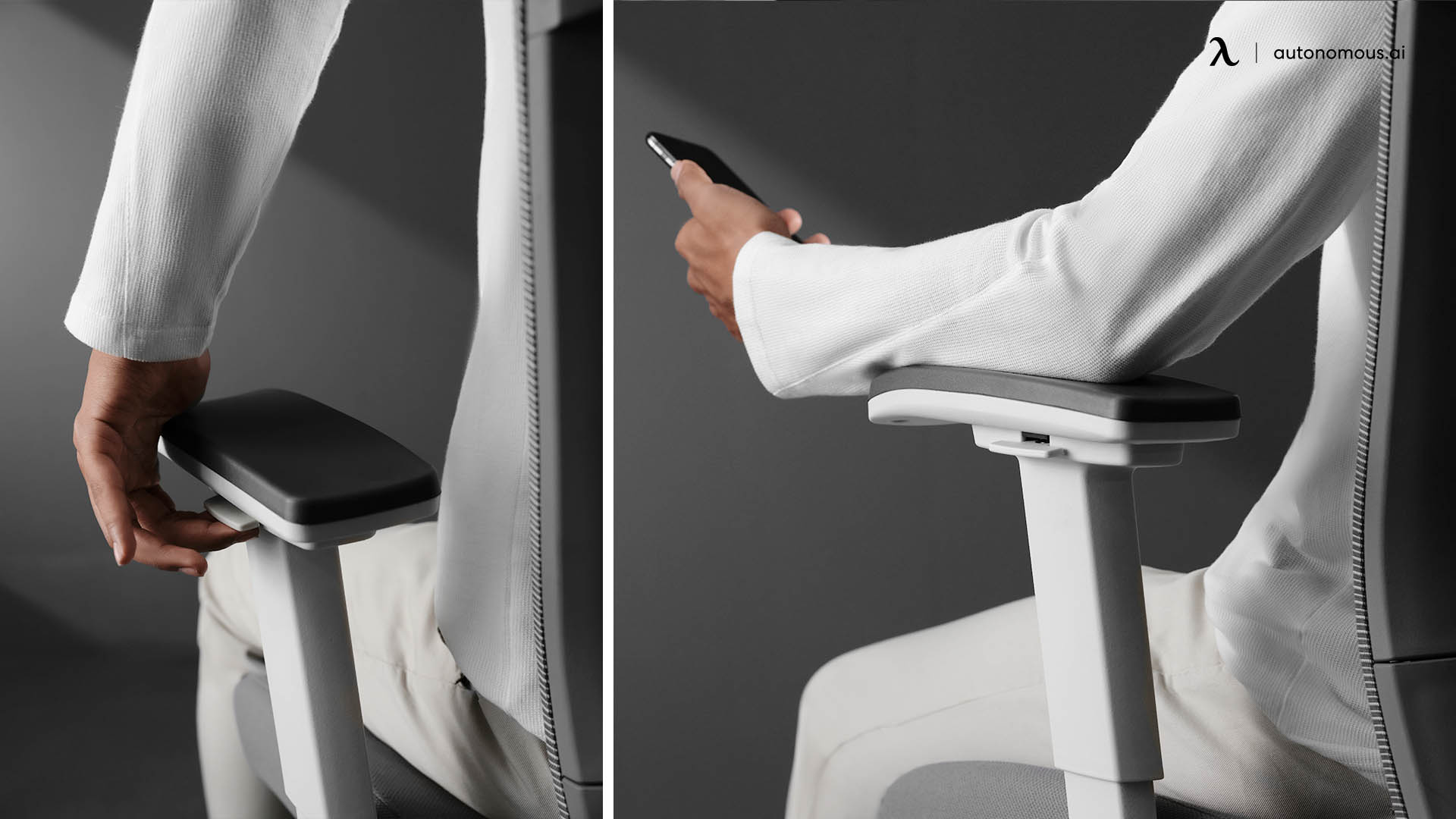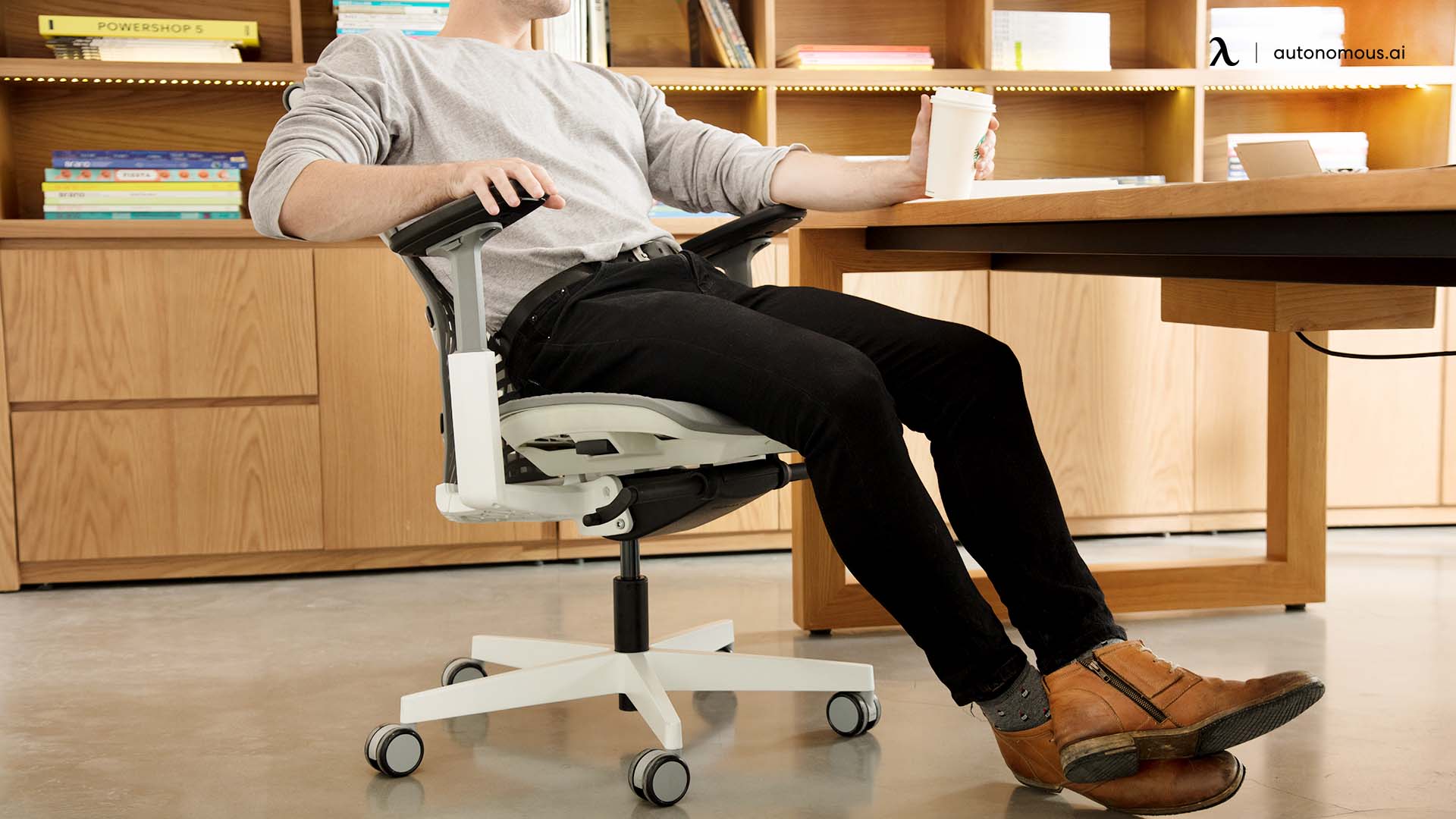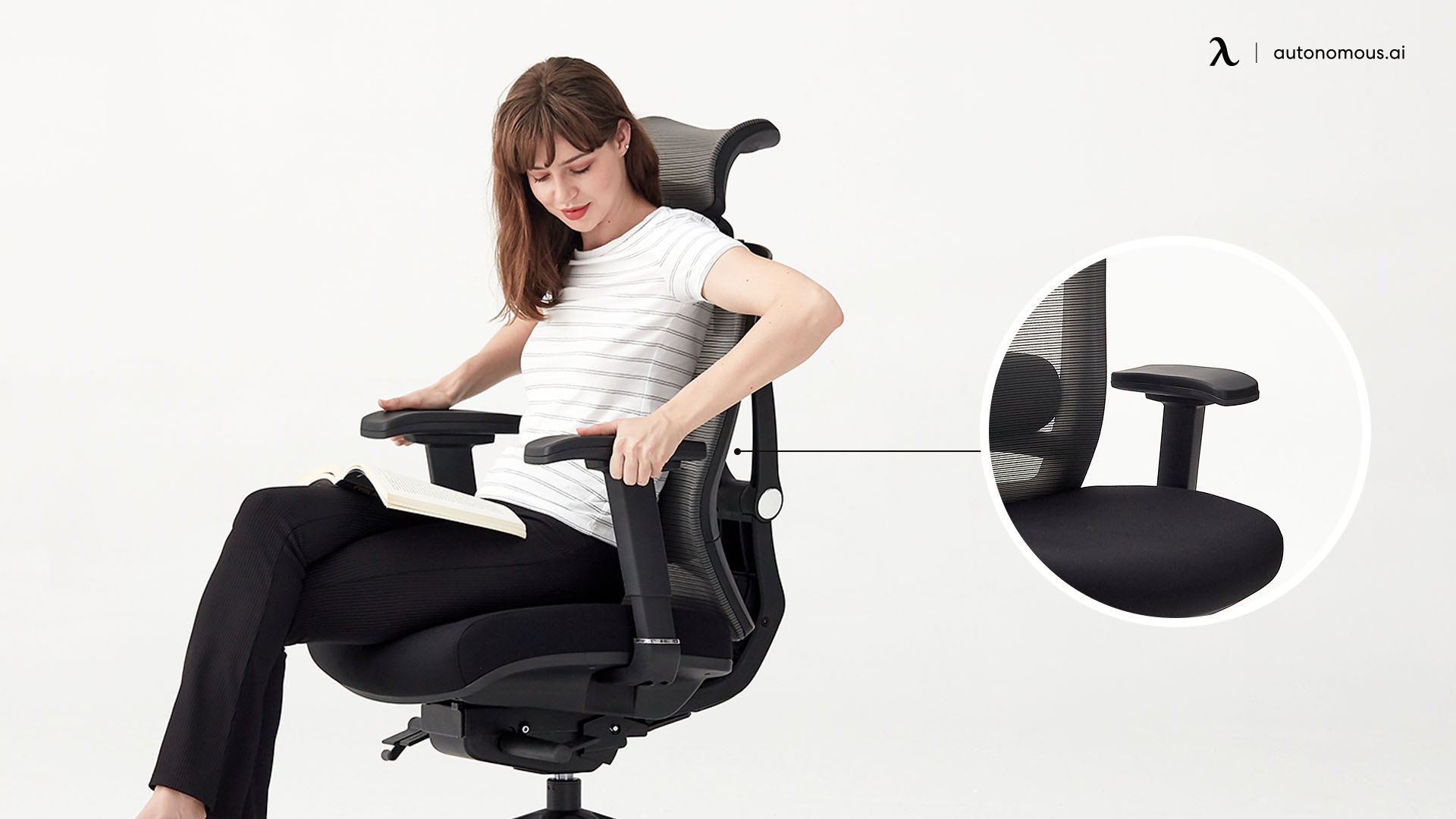Choosing Right Office Chair Armrests for Better Productivity
When it comes to ergonomics, office chair armrests are actually controversial. Opponents say they may exert pressure on the soft tissues of the elbow and forearm, causing tendinitis, and they prevent the user from getting close to the desk.
A high quality office chair has many features that make it a top choice. For starters, it has a strong frame to live up to the strength standard, has a comfortable design, offers adjustability for the user, and in short, is ergonomically friendly. A modern ergonomic work chair is much more different than the chair of old times in many ways.
Similarly, office chair armrests are a common feature you would see in a modern chair that improvises the overall seating experience of the user. For example, a desk chair with armrests supports the arms and the shoulders and keeps the subject free from any stresses. Many studies prove the benefits of an office chair with adjustable arms, but how exactly does an armrest work in an office chair, and what is the best type of armrest for the desk chair you need?
However, all the arguments against armrests can be addressed by choosing the right ones for your workplace and body type. Now, the question is, what are the ideal armrests in an office chair?
In this article, I’ll go through all the factors you should consider when choosing desk chair arms in an ergonomic chair, to avoid shoulder and forearm strain.
What are Office Chair Armrests?
For those who work desk jobs, armrests are an important tool in making their seating posture much more comfortable and health-friendly. In addition, armrests prevent physical fatigue by keeping the arms and shoulders set at a safe level.
The forearm support, provided by the armrests, plays a vital role in forming and strengthening the user's posture. And with computer chair adjustable arms, the benefits increase by various folds.
Since it has been a common discussion that whether or not a chair should have armrests, the point is to have adjustable armrests if one wishes to avail the maximum benefit of this accessory.
Now there are different types of armrests for desk chairs, and some of them are mentioned below.
Why are Office Chair Armrests Important?
A good office chair should support a variety of postures to allow the user to work effectively and comfortably. Many factors affect armrests usage, including the design of the chair and the task. Also, armrests must accommodate a diverse range of users and task requirements. For instance, females sit more upright compared to males.
However, whether used continuously or intermittently, armrests are a crucial form of postural support. A 2017 study found that forearm support, which is provided by properly configured armrests, can reduce discomfort or pain in your neck or shoulders. According to the researchers, without forearm support and good shoulder positioning, the upper trapezius and the deltoid muscles, which affect this area, are continuously active at the low-intensity level. This continuous activation may lead to the onset of neck pain in the office.
The arms and hands together comprise about 12% of your overall body’s mass. That’s a lot of weight to be holding without help for many hours. Fortunately, studies show that using properly configured armrests can reduce the weight on your spine by about 10% of your body weight.
Also, using the armrests as support when standing up reduces the force in your hips by 50%. This is crucial for older people or those with hip problems.
Office chair armrests also significantly reduce the onset of fatigue. Without armrests support, extending the hand forward by eight inches leads in fatigue in less than 10 minutes. With office chair armrest support, the time is extended significantly.
After noting all the benefits of armrests, let’s now dive into the conditions that armrest for desk chair must meet to be ergonomic.
Common Styles of Desk Chair Arms
A common misconception with office chair armrests is that they provide just a resting surface for the user. However, armrests prevent shrugging and slumping in the shoulder, so no upper body part experiences strain or pressure.
Even though the primary focus of an armrest remains the same regarding the type and the nature, here are some different types of armrests one might come across during the right office chair hunt.
T-Arm
The T-arm is attached to the chair's seat and has a post that runs perpendicular to the seat. The actual armrest makes a T shape on top of the pillar. This type of armrest can usually be lifted and lowered to obtain the perfect height for you and your workplace.
T-arm is also the most commonly seen type of armrest in an office chair. Since it has been there for a while, chairs with T-armrest don’t cost a lot.
Loop Arm
With a little extra take for extra support, the loop arm is commonly the type of armrest you can find and is also very easy to use. As the name suggests, Loop armrests form a complete circle rather than an open T shape. These armrests are available in two styles: fixed and adjustable. The biggest benefit is providing extra support for your arm while you recline on your chair. Some users, however, enjoy the aesthetic of a loop design.
Fixed Armrest
While adjustability is considered the biggest virtue in an office chair, fixed armrests are the opposite. But to some, fixed armrests can be a trouble as the chair you have might not fit your arm placement or cannot be moved to work in different positions.
But, if you don't spend a lot of time in your office chair, a model with fixed armrests can be a good choice. Remember that you won't be able to make any revisions, so try out a few alternative options before making a final decision. Budget office chairs and executive-style leather chairs typically have fixed armrests.
Types of Computer Chair with Armrests
The armrests in chairs range from fixed armrests making a product right in your budget to adjustable armrests most commonly seen in an expensive chair. The types of the armrest are designed according to different comfort levels and ergonomics incorporated into the chair. Here are some common types of computer chairs with differing armrests.
Height Adjustable
Height adjustable armrests are the simplest yet most common type of armrest that you would find in an office chair. These armrests are made to lower or elevate the level of armrests, so your arms, shoulders, and necks are prevented from any extra stress. That being said, height-adjustable armrests are also the most commonly found type of armrests in office chairs.
Another advantage of such armrests is that they are easy to control. There is either a button or a lever-type mechanism that can be used to set the height to a safe level. If you need to know the right height for your arms, the shoulders should be relaxed, and the arms should be close by your side, so there is no shrugging or slouching.
Width Adjustable
Ergonomics also requires the armrests to be closer to your body. The farther the armrests, the greater the angle of your shoulders, which will cause a certain level of discomfort to the user. This accounts for the width adjustability of armrests.
Armrests that may be moved closer or further away from your body are available on several office chairs. This is yet another technique to produce personalized comfort that is tailored to your specific body type. These Office chair armrests are also known as pivot armrests as they move around a certain point to relax your upper body even further.
360 Degrees Rotation
As the name suggests, 360 degrees rotation in Office chair armrests allows you to move the armrests freely completely. The arm pads can swing up to 360 degrees, and you can also slightly rotate them in or out to match the comfort level.
What is the Correct Height for Your Arm Rests?
Even if your chair has armrests, if they aren't set to an ergonomic position, you will experience a lot of discomfort. Armrests should be positioned just beneath a neutral elbow position to keep the shoulders in a neutral (i.e., comfortable) position.
An armrest essentially supports the arm's weight, allowing the shoulders to 'rest.' The optimal position for keeping the shoulders relaxed is in a neutral shoulder stance. The shoulders should neither be elevated or depressed, and the upper arm must not be flexed away from the user's chest.
5 Factors to Consider When Looking for Office Chair Armrests
From the height, width, length to pivot, the more adjustable the armrests are the more precisely they will support an ergonomic sitting posture and body type.
1. Height
Most desk chairs with armrest are height adjustable. However, one of the major arguments against armrests is that they can prevent you from getting too close to the desk, making you strain your neck and back as you try to reach your workspace. Measure the clearance space under your desk to get the proper measurements.
For instance, a typical non-adjustable desk is 29 inches high. So, based on that, look for armrests that can extend up to 29” or more, and go down to 27” or less. Also, consider the height range of the seat pan when calculating your numbers.
2. Pivoting armrests
Normally, pivoting armrests are angled inwards or outwards to form a “V” shape.
If you often assume arm positions, such that your wrists are close to each other without desk support, pivoting armrests will be highly beneficial in offering full support to your forearms in those positions.
Pivoting armrests can help you identify the most comfortable position for your neck and shoulders. This is true, especially if you’re prone to kyphosis, a postural condition where your upper back rounds forward. The pivot feature helps you stretch the pectoral muscles in the front and contract the rhomboids in the back; these are the exercises often given to office workers, anyway. So, why not let your office chair armrests help you?
Computer chair with armrest that pivot inwards are more beneficial than those that pivot outwards. To get the maximum benefit off of pivoting armrests, look for a minimum of 15 degrees tilt.
3. Armrests width
Apart from height adjustability, width is the most important feature to consider when picking out armrests.
For a proper sitting posture, your elbows should be directly under your shoulders. However, we all have different shoulder widths, so having armrests that can move close or away from your torso is crucial in supporting your elbows and forearms, especially if you’re sharing your office chair with other people.
Choose armrests whose width you can adjust up to 4 inches, which according to most studies accommodate 90% of the human population.
4. Armrests length
Some office chair armrests are length-adjustable, too. This means they slide forward and backward, maximizing support of your forearms in various postures. This comes in handy in body positions where you are leaning forward or back.
Since length adjustable armrests have varying arm sizes, they can adjust to fit the small arms as well as the large ones promoting an ergonomic sitting posture.
5. Flip-up armrests
Finally, you can dismiss some armrests altogether when they are not in use, by flipping them up. Flip-up armrests are an ideal choice in shared office environments where some prefer a chair with armrests and others don’t. They are also a superb choice if you often perform tasks where armrests get in the way, such as playing the guitar. Plus, if you have a desk with a small clearance space underneath, flipping armrests is an ideal choice.
In the world of ergonomics, flip-up armrests offer a compromise. The way their hinges are designed, they offer minimal adjustability other than flipping upwards.
So, when looking for office chair armrests, you’ll need to weigh the pros and cons carefully and make sure the default height and width of the armrests match your desk and body type before choosing flip-up armrests.
Conclusion
Armrests play a crucial role in promoting comfort and wellbeing, allowing you to work effectively and productively.
They encourage an ergonomic sitting posture and promote freedom of movement while stabilizing one’s position; reduce pressure on the neck, shoulders, and arms. Also, they reduce pressure on the spine by distributing pressure evenly on the seat.
Emerging research suggests that computer users’ arms are properly supported when an adjustable armrest follows task-related postures and arm positions. However, the more adjustable the armrest is, the more realistically you can position it to support your arms.
Subscribe for a 10% discount on your first order.
Sign up for our weekly update and be the first to know about our specials & promotions.
Spread the word














.jpg)


